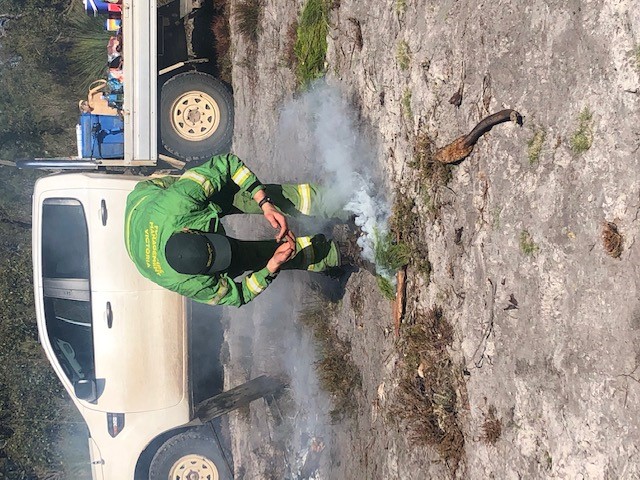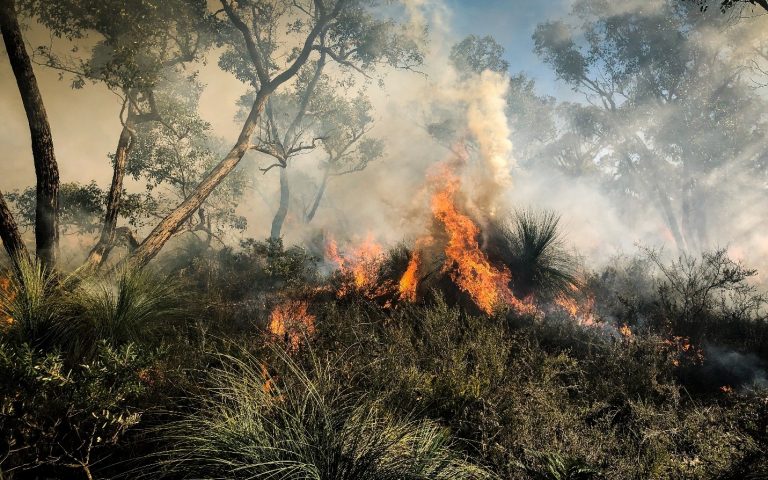Red-tail Black Cockatoo
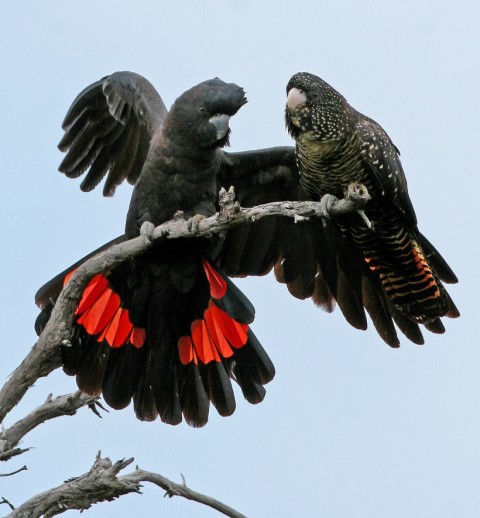
This project supports actions to prevent further population decline of the endangered South-eastern Red-tailed Black Cockatoo
(SeRtBC)
It supports priority actions to address threats from habitat loss through regeneration of feed trees, protection and augmentation of nest sites and use of Traditional Burning techniques for wildfire management.
Project: Red-tails of the Glenelg Plain
Value: $1,200,000 over 4 years
Funded by: National Landcare Program
What is the South-eastern Red-Tailed Black Cockatoo?
The Red-tailed Black-Cockatoo Calyptorhynchus banksii is a large dark grey-black cockatoo up to 63cm in length. Its genus name Calyptorhynchus is derived from the Greek words calyptos – hidden – and rhynchus – beak.
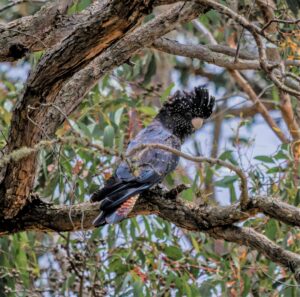
Five distinct subspecies are recognised in Australia, with considerable variations in overall size, bill shape, bill size and colour between each of the races:
- Calyptorhynchus banksii graptogyne – south-west Victoria and south-east of South Australia (referred to as the South-eastern Red-tailed Black-Cockatoo).
- Calyptorhynchus banksii banksii – northern and eastern Queensland.
- Calyptorhynchus banksii macrorhynchus – northern Western Australia, Northern Territory and Gulf of Carpentaria.
- Calyptorhynchus banksii samueli – Inland Australia from western side of Western Australia, Central Australia and patchy through the Murray-Darling area in western New South Wales.
- Calyptorhynchus banksii naso – south-west corner of Western Australia.
The South-eastern Red-Tailed Black Cockatoo Calyptorhynchus banksii graptogyne is smaller in overall body size than other subspecies. It also has the lowest population and is restricted to the south-west of Victoria and adjacent areas in the south-east of South Australia.
The population in 1996 was estimated to be not more than 1000 with only a small proportion (10%) or 100 breeding pairs (Emison 1996), In 2002 the highest count was 785 birds (Commonwealth of Aust. 2007). In 2015 the population was estimated to be around 1500 individuals.
The diet of the south-eastern Red-tailed Black-Cockatoo is highly specialised, consisting of seeds from the Brown Stringybark Eucalyptus baxteri and Bulokes Allocasuarina luehmannii.
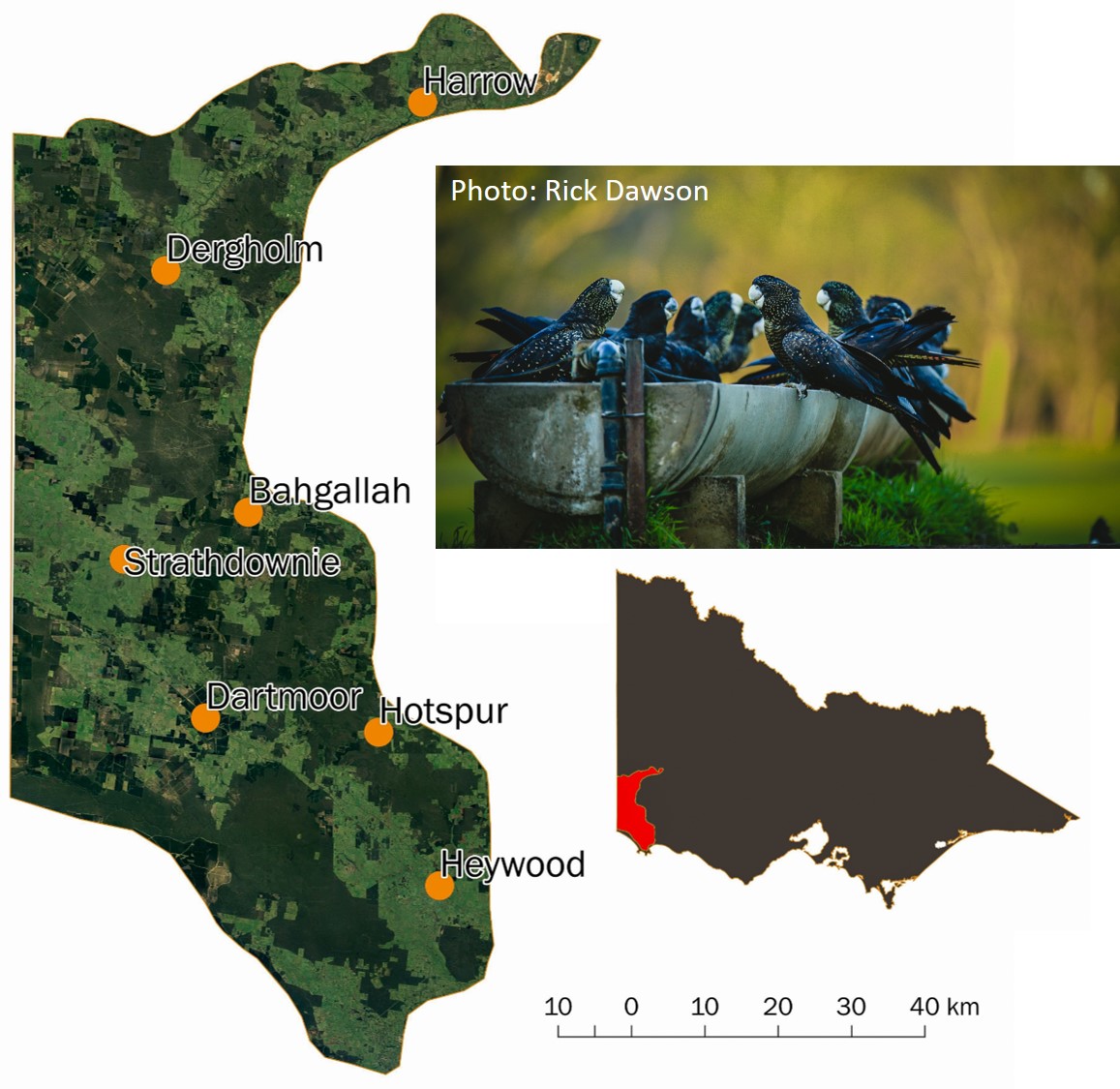
Cultural burning for Red-tails
In October 2020 a burn using traditional cultural techniques was undertaken at Hurdle Swamp, near Casterton. Glenelg Hopkins CMA and the DELWP staff supported Gunditj Mirring Traditional Owners to deliver a successful burn to enhance the habitat of the South-Eastern Red-tailed Black Cockatoo.
The cultural burn of 16ha employed traditional burning practices to ensure tree canopies were protected while the understorey fuel levels were reduced, but the food source of cockatoos in the trees were protected. Post-burn flora surveys conducted to see how the areas had responded to the burn has returned interesting results.
Initial observations included flowering Grass Trees and a high number of Banksia seedlings growing following their pod-split from the burn, while the tree canopies have remained as productive food sources for the Red-tails. However, the Glenelg Hopkins CMA team found patches of vegetation that appeared almost completely untouched by fire.
“On analysing that data it showed the burn pattern was highly species specific – some plant species were almost completely burnt out, while others were largely untouched. This is likely to have occurred due to differences in species flammability,” Glenelg Hopkins CMA senior field officer, Ben Zeeman, said.
“The cool, low-intensity burn may have reduced bushfire risk at the site by removing the more flammable fuels, while leaving low-flammable fuel behind to continue serving as habitat cover.
“While more work is still needed before we can be really confident, it is a really interesting early result.”
Project delivery partners:
Greening Australia, Trust for Nature, Birdlife Australia, Barengi Gadjin Land Council, Gundtij Mirring Traditional Owners

